- October 21, 2022
- Posted by: Author Anoma
- Categories:

“ Technology now allows people to connect anytime, anywhere, to anyone in the world, from almost any device ” — Michael Dell
In the virtual hiring process, first impressions count, and you only get one chance to make them. A team member’s onboarding process plays a significant role in how equipped and engaged they feel as members of the team.
But it can be challenging to Onboarding Remote Employees – Anoma Tech for more reasons than you might imagine. You’ll need to plan more carefully and be more prepared than you would in a typical office environment. New employees can easily lose themselves in their work when their co-workers are seated nearby. Just imagine how they might feel if they were working entirely by themselves.
The Onboarding Remote Employees – Anoma Tech must be totally secure and comprehensive. The new employee will require a method of quickly and effectively obtaining the information they require if they are working in a different time zone.
Additionally, the social aspect needs to be improved. It will be challenging for an employee to overcome their initial sense of isolation when working remotely. To successfully integrate them into your working family, the structure is required.
“ Working from home is great for a lot of people because they get to spend more time with their family, their kids, and their pets. ” — Brian Peters, Buffer
Let’s start with the fundamentals and components that must be there from the outset,
Hardware and software:
It’s possible that your new employee will need specific tools or access to the right software, resources, and accounts in order to complete their tasks. For each position you are hiring for, make a list of all the requirements that person will need to complete the position.
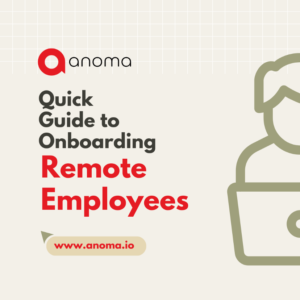
Asking others in the same or a related role what they use on a daily basis will help you quickly learn this information. When the list is ready, check off each specific item and make sure the Onboarding Remote Employees – Anoma Tech to everything by the end of the first day.
Create an onboarding manual (expectations, rules & culture explained):
What is expected of the role and how your company operates are important details that must be communicated right away. If you mentioned it during the Onboarding Remote Employees – Anoma Tech any new teammates shouldn’t find it wholly unfamiliar.
“ There’s a great opportunity to begin to explore how we create an environment that is safe for people who want to have conversations about flexibility, who want to be flexible, vs. fighting that change. ” — Peter Yobo
However, it is worthwhile to go over it again and provide any necessary documentation so that the new employee can consult it when you are not present. The same holds true for how to set up meetings. To prevent confusion in the future, this should be clarified and laid out in a document, knowledge base, or internal wiki.
There isn’t always someone available to explain things to you, unlike in the office. Because of this, accurate documentation is actually required.
Break Down What You Need to Know:
What about the information you need to know now that we’ve covered the very fundamentals for your new hires? If the interview was conducted by someone other than you, be sure to check these since you will have likely already covered them during the interview process.
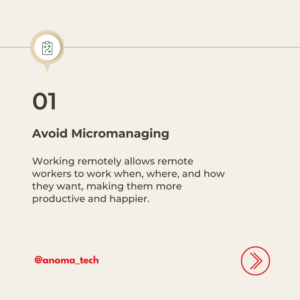
If there are any gaps in your knowledge, your top priorities should be to learn important personal information and how comfortable they are working remotely. The remaining details are quite typical for all jobs, whether they are local or remote.
Does the new employee have extensive knowledge of your business? Size, divisions, management, and additional information? If they do, you can concentrate your onboarding efforts on the areas where they might require more assistance.
Stage-Based Remote Employee Onboarding:
You can start the onboarding process properly once everyone has the information they require to function. In reality, onboarding starts even before the interview stage is complete, not just on the employee’s first day. As soon as someone accepts their offer and signs their contract, the pre-start phase needs to begin.
“ Remote work is the future of work. ” — Alexis Ohanian
We advise sending each new team member a Onboarding Remote Employees – Anoma Tech during the pre-start phase. Include any forms you need them to complete, along with a request form for any tools they might require, like a laptop for their job. This is the perfect time to send out any cool merchandise or swag you may have!
Set up a meeting on their first day after all contracts have been signed to advance the onboarding procedure. You can give them the resources, logins, and credentials you previously gathered during this meeting, as well as the crucial details they require.
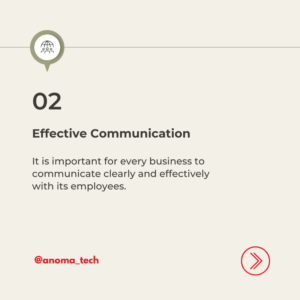
Initial 90 Days:
There will be a lot of learning and socializing to get to know the team during the crucial first 90 days of any job. To make sure the new hire gets along with everyone on the team and so that you can participate in the feedback process, you might think it would be best to assign them a buddy.
The best advice we can give is to set aside 30 days for a feedback session with your buddy, you, and the team lead/manager to share constructive criticism and comments. You can talk about a new hire’s strengths, weaknesses, and areas for improvement.
“ Remote work is this incredible invitation to really get good at building inclusive cultures where there’s a wide variety of types of people, and to build a culture where everyone feels included and everyone is experiencing ongoing growth and development on a regular basis ’’ — Claire Lew
Together with the new employee, create a plan, and review it each month. The manager should acknowledge each accomplishment and update the management group on how the new team member is doing.
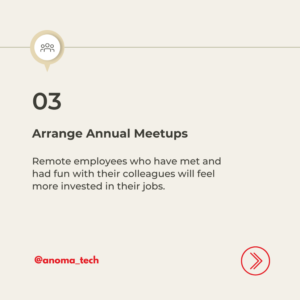
The new hire’s manager should assume control of all feedback discussions and evaluations after the first three months, or roughly 90 days. When they have settled in more and you can see more of their skills, it is best to check their skill level and salary at this time. By this time, the onboarding process should be over and relationships between people should be more established.
If We Don’t Onboard Well, We Stand to Lose a Great Deal:
The main lesson to be learned about onboarding remote workers is that everything requires careful planning and documentation. If a new employee has any questions, getting the answers they require should be almost as simple as if they were in an office.
There should be a resource of information they can turn to if they don’t have a colleague they can ask directly. If someone has never worked outside the office before, we might need to help them adjust to remote work.
“ Remote work isn’t a privilege or a special accommodation. It’s a way of working, and that’s a strong statement for some people ’’ — Nickie Bellington
But if you have gathered all the necessary data as we advised, you ought to be familiar with all of these.
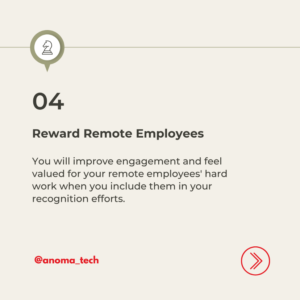
We hope that your upcoming onboarding goes well and that it results in a fruitful working relationship that benefits everyone.
Onboarding Remote Employees – Anoma Tech
At Anoma Tech, We employ the most talented top-tier resources in the USA and also across the globe primarily in Egypt, Canada, LATAM, UAE & India.
We have supported not only the existing code base but also built the core frameworks from scratch. Anoma Tech Inc. provides services in a wide variety of technologies which also include Mobile product development, Web Development, Quality assurance, and DevOps tech stacks for all scales of companies.
